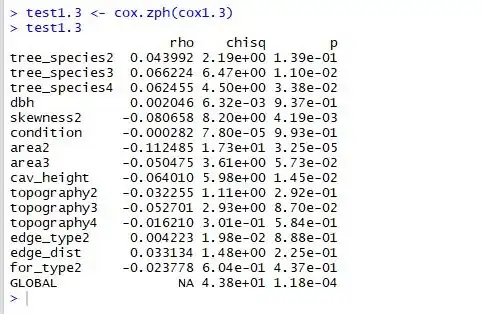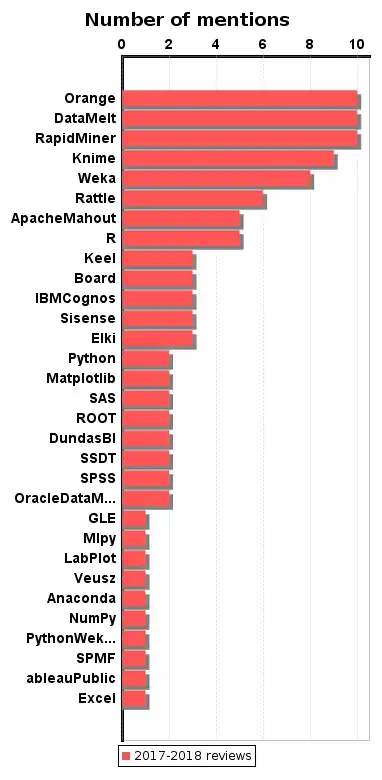below you can see the cox.zph function to test for proportional hazards used on my data.
Issue number 1: there are multiple violations of the proportional hazards assumption (these are tree_species 3 and 4, Skewness, Area 2 and Cavity height). Do I prioritise stratifying/making an interaction with time for the most significant variable first and then check the assumption again (and again until at least the global assumption is met)? Or do I correct them all at the same time?
Issue number 2: the variable tree_species has 4 levels. Just tree_species 3 and 4 violate the PH assumption. Do I correct this variable despite tree_species 2 not having any issues? Same goes for the variable "area".

